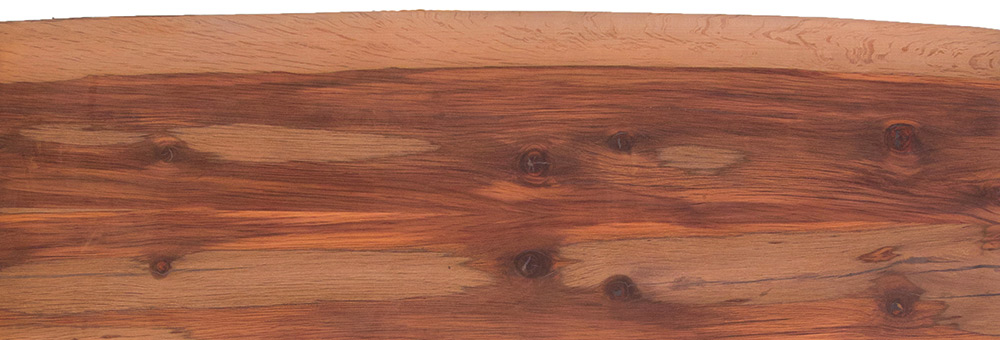Australian Beefwood Turning Blanks

Australian Beefwood Turning Blanks
Buy Online
All Turning Blanks
Shop NowAustralian Beefwood Specs
- Scientific Name
- Grevillea striata
- Common Name(s)
- Beefwood
- Distribution
- Western Australia
- Average Dried Weight
- 60 lbs/ft3 (965 kg/m3)
- Specific Gravity
- Basic: .78, 12% MC: .96
- Janka Hardness
- 2,420 lbf (10,770 N)
- Modulus of Rupture
- 13,630 lbf/in2 (94.0 MPa)
- Elastic Modulus
- 2,030,000 lbf/in2 (14.00 GPa)
- Crushing Strength
- 7,830 lbf/in2 (54.0 MPa)
- Shrinkage
- Radial: 3.5%, Tangential: 5.8%, Volumetric: 9.3%, T/R Ratio: 1.7
- Appearance
- Beefwood is a medium to dark reddish brown with lighter reddish grey rays, (perhaps giving it a visual similarity to raw beef: hence the name). Like other woods that exhibit the strongest figure in quartersawn pieces, (such as Sycamore), Beefwood has the most pronounced figure and displays the largest flecks when perfectly quartersawn; this is due to the wood’s large medullary rays, whose layout can be seen the clearest when looking at the endgrain.
- Texture
- Has a fairly coarse texture and straight grain. Endgrain: Diffuse-porous; small to medium pores in tangential rows; solitary and tangential multiples of 2-3; deposits in heartwood occasionally present; growth rings indistinct; very wide rays easily visible without lens; parenchyma banded, diffuse-in-aggregates.
- Rot Resistance
- No data available.
- Workability
- Fairly difficult to work because of its high density and tendency to tearout during planing. Beefwood turns, glues, and finishes well.
- Odor
- No characteristic odor.
- Allergies/Toxicity
- Although there have been no adverse health effects specifically reported for Beefwood, the closely related Southern Silky Oak (Grevillea robusta) has been reported to cause eye and skin irritation.
- Pricing/Availability
- Limited availability within its native range within Australia, Beefwood is virtually never available in other markets such as the United States. Prices are likely to be high.
- Sustainability
- This wood species is not listed in the CITES Appendices or on the IUCN Red List of Threatened Species.
- Common Uses
- Inlay, marquetry, turned objects, and other small specialty items.
- Comments
- Beefwood is in the Proteaceae family, and has wide rays that are characteristic of Lacewood. In its vaguest sense, the term “lacewood” is used to describe any wood that displays figuring that resembles lace, (which would technically include Beefwood). Attempts to identify a specific board macroscopically may be difficult. However, Beefwood can usually be separated from most common species of Silky Oak and Lacewood based upon its darker color and considerably higher density (with the exception of Leopardwood, which also has a higher density).
Australian Beefwood Turning Blank Prices
1.5″ x 1.5″ x 12″ Australian Beefwood Turning Blank
$3.70
Buy Online


